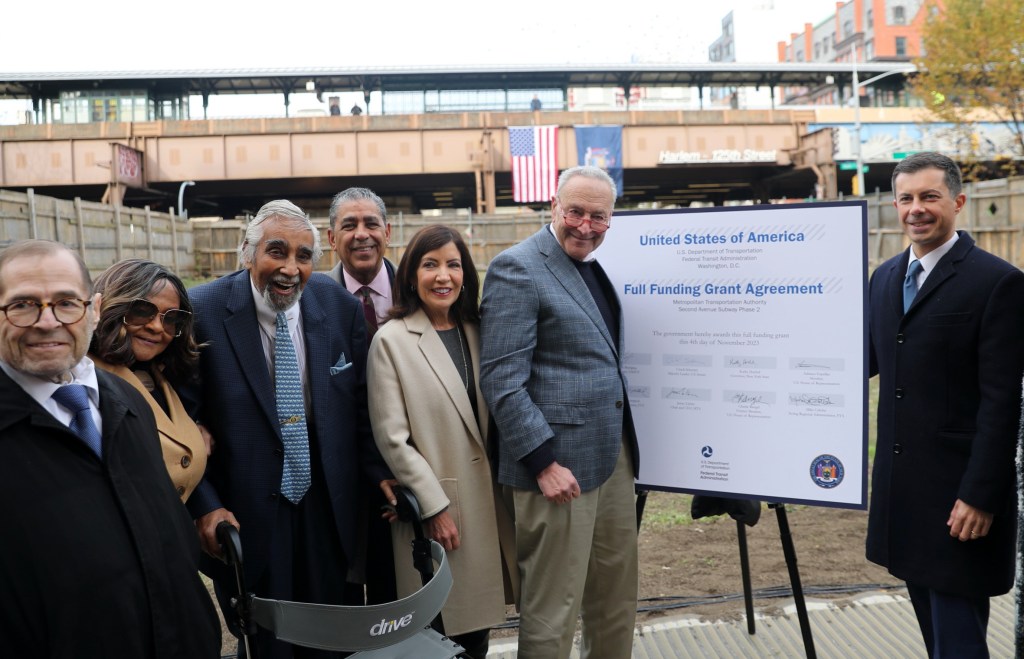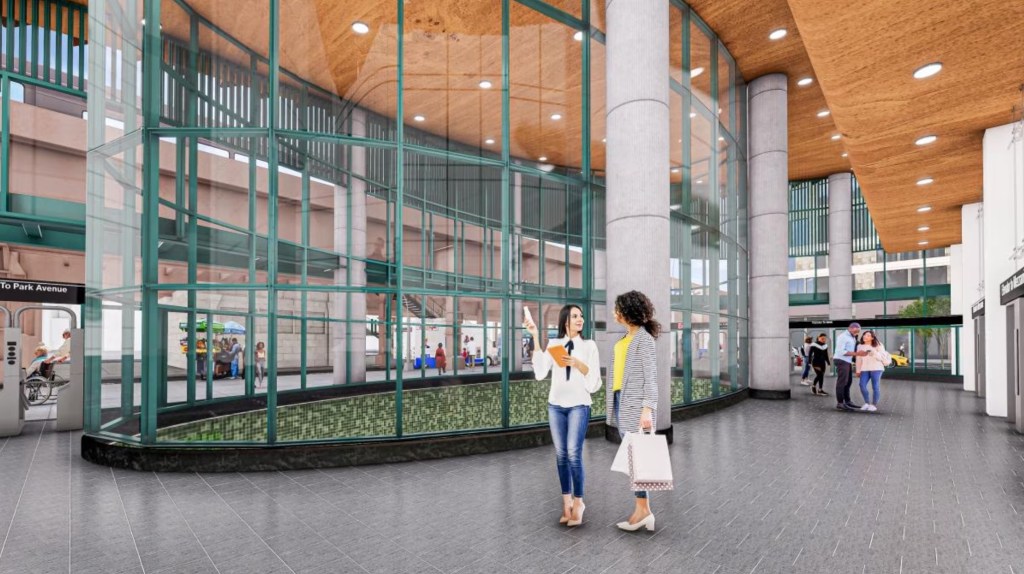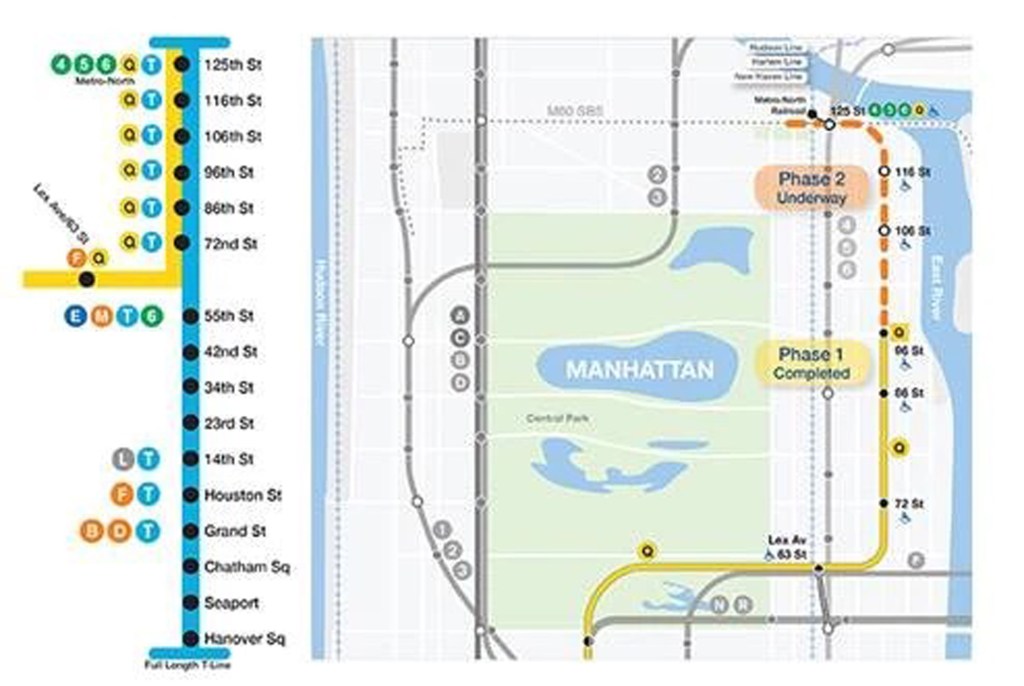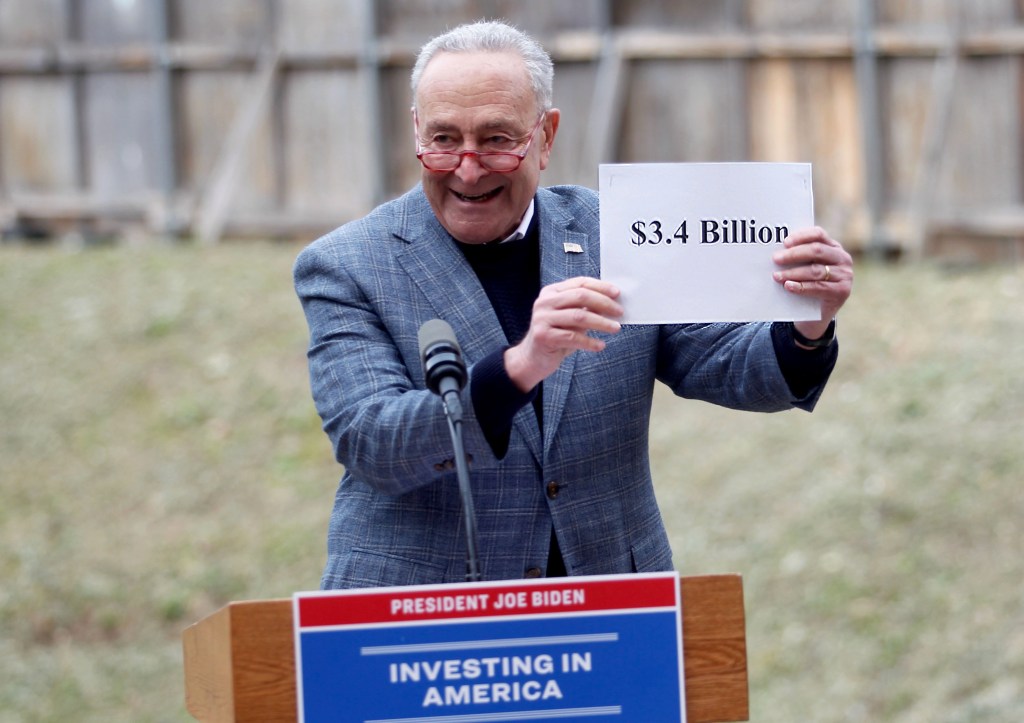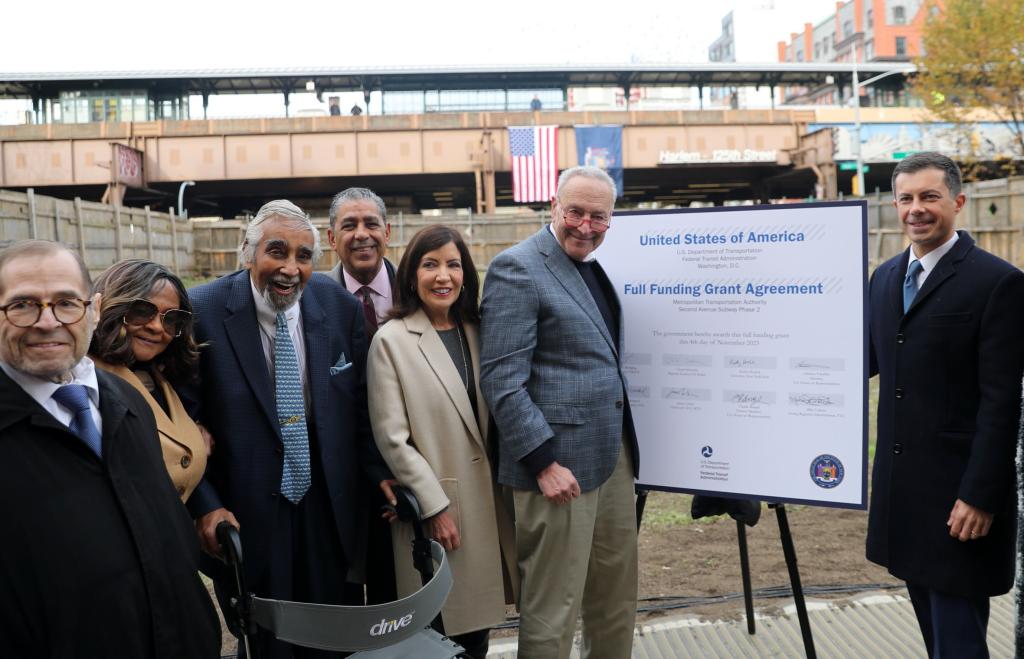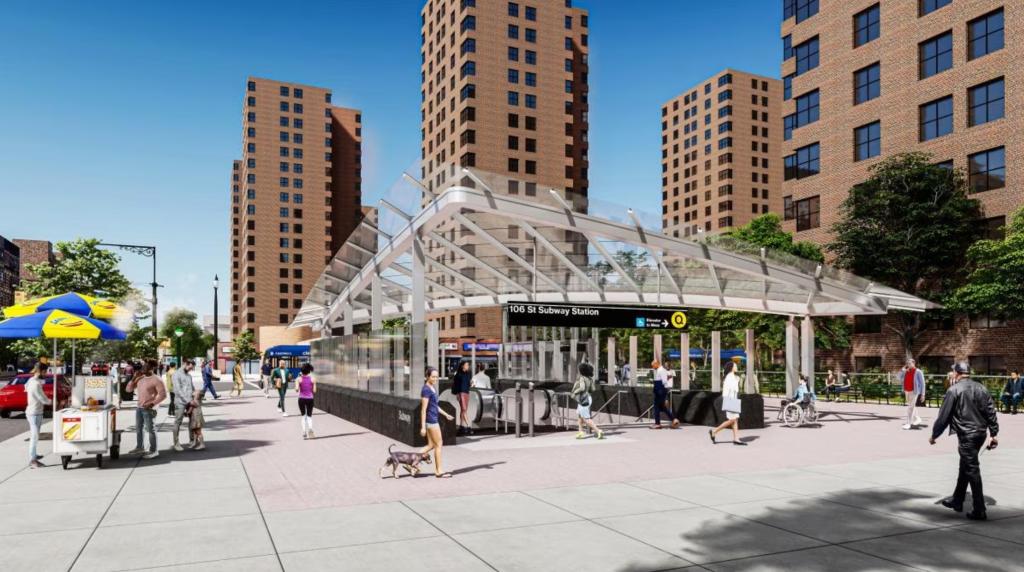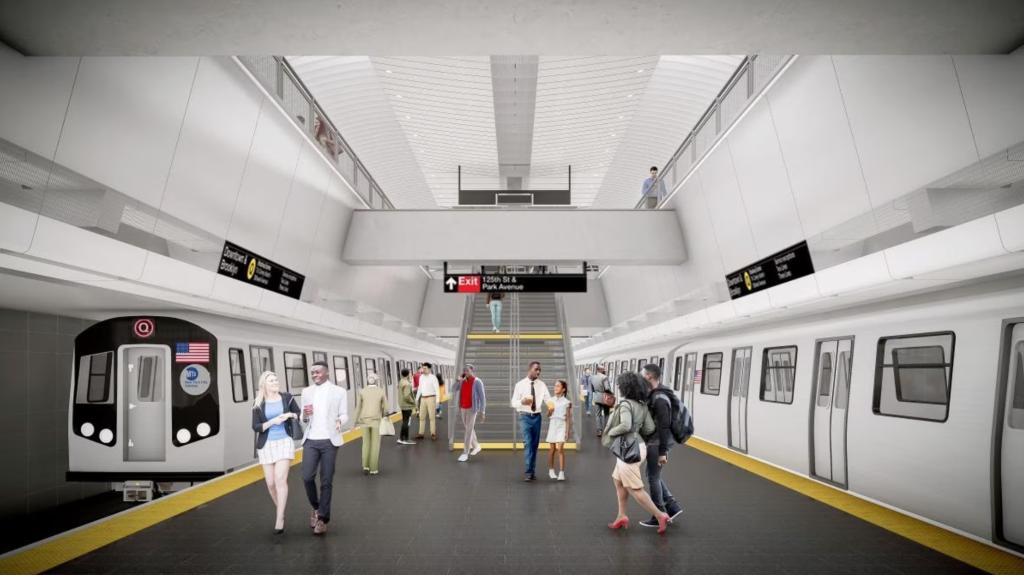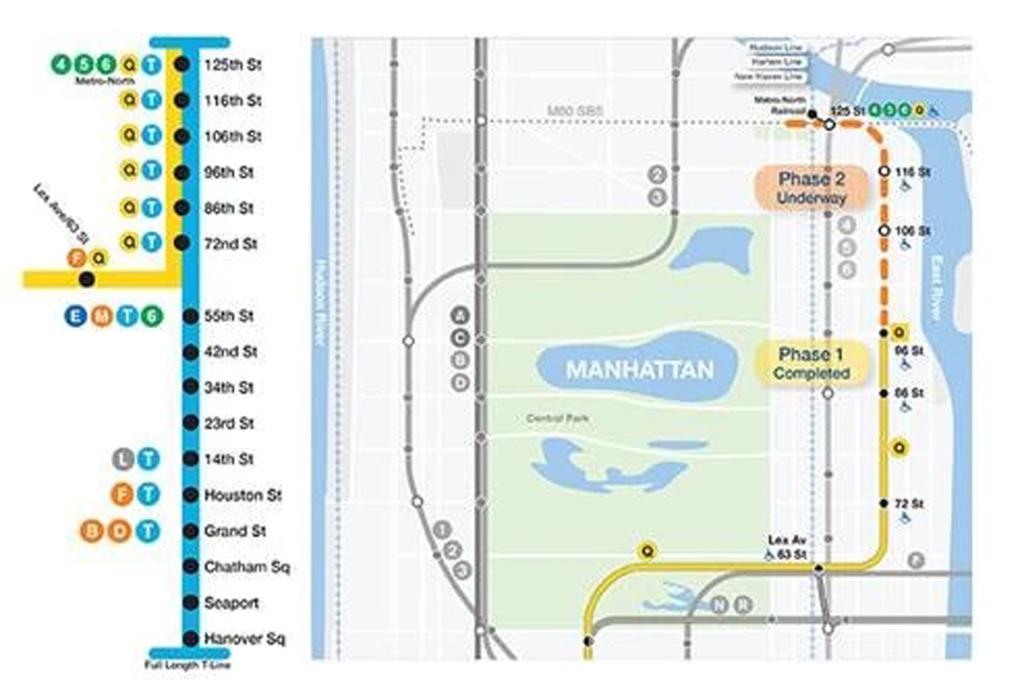Stalled Second Ave subway work gets $3.4B in federal funds
After a years-long delay, the second phase of the Second Avenue Subway extension is set to get underway, thanks to a $3.4 billion injection from the federal government.
This phase of the project will continue the line north into East Harlem, from 96th Street to 125th Street, and includes three new stations at 106th, 116th and 125th Streets.
“Every dollar we need to build this is now here,” Senate Majority Leader Chuck Schumer said at a news conference in Harlem Saturday morning.
The cost total is expected to be $7.7 billion.
When the work is done, 300,000 people in the transit desert of East Harlem will benefit, he added.
Last week, Schumer and Rep. Adriano Espaillat announced a full funding grant agreement with the Federal Transit Administration. On Saturday they gathered near the Harlem-125th Street station with US Secretary of Transportation Pete Buttigieg, Gov. Kathy Hochul, MTA Chair Janno Lieber and other officials to sign it.
About 30 union laborers were also in attendance, many in hard hats and fluorescent Laborers Local 731 jerseys.
The grant application for the project has been in limbo since 2018. Though former President Donald Trump voiced support for it, his administration declined to give it the go-ahead. In 2021, Hochul pledged to resume the project.
The first phase of the project, which extended Q subway service from 63rd Street to 96th Street along Manhattan’s East Side, wrapped in 2017.
A specific date for construction was not announced but the project is expected to take around 8 years once it does begin.
Lieber said that procurement to relocate the old utilities beneath Second Avenue is underway.
Water, sewers and electric utilities are currently located under underground and must be transported away from the construction zone, according to MTA plans.
The MTA did not immediately respond to an inquiry about impending road and transit closures related to the work, but in plans has said it is trying to minimize the impacts.
Construction for this phase will also include excavation for the new tunnel and stations, station entrances, ancillary buildings, and connections to the 4/5/6 subway at Lexington Avenue.
A Post investigation in March built upon New York University research revealed how the MTA’s excessive designs for stations twice as big as necessary compound with cost disadvantages due to union work rules and local regulations. More complex projects in Europe’s oldest cities cost a fraction of this new phase of work.
On Saturday, Buttigieg was asked if he was worried that the plug could get pulled on the project down the road.
“We’re determined not to let that happen, but it is something that’s on our radar,” he told reporters.
“Building in New York ain’t cheap and we all know that,” Lieber noted. “But with the Second Avenue Subway phase two, you get the lowest cost per rider of any major rail project in the United States.”
Notably absent from the news conference was Mayor Eric Adams, who cancelled a recent trip to Washington amid a federal probe into donations made to his campaign. A piece of paper with his name on it two chairs down from Hochul remained empty.
